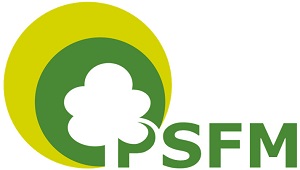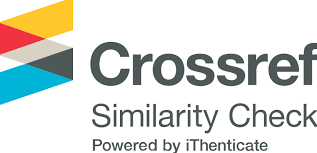NGHIÊN CỨU VI SINH VẬT NỘI SINH VÀ CÁC HỢP CHẤT HÓA HỌC CÓ HOẠT TÍNH KHÁNG NẤM GÂY BỆNH Ở CÁC DÒNG KEO TAI TƢỢNG KHẢO NGHIỆM TẠI THỪA THIÊN HUẾ
Từ khóa:
Keo tai tượng,, Vi sinh vật nội sinh,, Hợp chất ức chế nấm, Kháng bệnh, Ceratocystis sp, Corticium salmonicolorTóm tắt
Keo tai tượng (Acacia mangium) là loài cây trồng rừng quan trọng để cung cấp gỗ cho sử
dụng trong nước và xuất khẩu. Bệnh phấn hồng do nấm Corticium salmonicolor và bệnh chết héo
do nấm Ceratocystis sp. được xác định là những bệnh hại chính cho Keo tai tượng ở Thừa Thiên
Huế. Nghiên cứu các vi sinh vật nội sinh và các các hợp chất hóa học có hoạt tính ức chế nấm gây
bệnh ở các dòng Keo tai tượng là cơ sở cho việc chọn giống kháng bệnh. Chính vì vậy, một khu
khảo nghiệm 35 dòng Keo tai tượng được thiết lập tại Thừa Thiên Huế năm 2009 nhằm tuyển
chọn các dòng kháng bệnh. Mẫu cành nhỏ (đường kính khoảng 1cm, chiều dài khoảng 10cm),
mẫu lá (khoảng 1kg) của cây đại diện cho mỗi dòng được thu thập tại hiện trường để phân lập
nấm và vi khuẩn nội sinh và chiết xuất các hợp chất hóa học bằng dung môi methanol và
methylene chloride. Đã phân lập được 8 chủng vi khuẩn và 13 chủng vi nấm từ 35 dòng Keo tai
tượng trong đó có 2 chủng vi khuẩn và 13 chủng nấm có hoạt tính ức chế nấm Ceratocystis sp. và
chỉ có 8 chủng (1 chủng vi khuẩn và 7 chủng nấm) có hoạt tính ức chế nấm Corticium
salmonicolor. Cặn dịch chiết từ lá bằng dung môi methanol hoặc dung môi methylene chloride
của 26 trên 35 dòng Keo tai tượng ức chế ở mức độ mạnh (ức chế 40-60%) và mức độ rất mạnh
(ức chế >60%) đối với nấm Ceratocystis sp.; chỉ có 16 dòng ức chế ở mức độ mạnh và rất mạnh
đối với nấm Corticium salmonicolor. Tổng hợp từ khả năng ức chế nấm gây bệnh của vi sinh vật
nội sinh và các hợp chất hóa học tách chiết từ dung môi methanol hoặc từ dung môi methylene
chloride, có tổng số 28 trên 35 dòng Keo tai tượng có khả năng ức chế được cả hai loại nấm gây
bệnh Ceratocystis sp. và Corticium salmonicolor ở mức độ mạnh và rất mạnh, gồm các dòng:
AMD01, AMD02, AMD04, AMD05, AMD06, AMD07, AMD08, AMD09, AMD10, AMD11,
AMD12, AMD13, AMD14, AMD15, AMD16, AMD18, AMD19, AMD20, AMD22, AMD24,
AMD25, AMD27, AMD29, AMD31, AMD32, AMD33, AMD34 và AM35. Khả năng kháng
bệnh của các dòng Keo tai tượng đối với 2 loài nấm gây bệnh còn đang tiếp tục theo dõi ở hiện
trường.
Tài liệu tham khảo
/1. Nguyễn Hoàng Nghĩa, 2003. Phát triển các loài keo Acacia ở Việt Nam, Nhà xuất bản Nông
nghiệp, Hà Nội.
/2. Phạm Quang Thu, 2002. Một số biện pháp phòng trừ, quản lý bệnh hại Keo tai tượng ở Lâm
trường Đạ Tẻh- Lâm Đồng. Tạp chí Nông nghiệp và phát triển nông thôn – Bộ Nông nghiệp và
Phát triển nông thôn. Số 6, trang 532-533.
/3. Phạm Quang Thu, Nguyễn Hoàng Nghĩa, Nguyễn Văn Nam, 2011. Nghiên cứu các hợp chất
hóa học kháng nấm gây bệnh trong lá các gia đình Keo lá tràm khảo nghiệm tại Thừa Thiên Huế,
Tạp chí Khoa học Lâm nghiệp, Viện Khoa học Lâm nghiệp Việt Nam, số 4/2011.
/4. Hammerschmidt, R. 2007. Introduction: definitions and some history. Pp. 1-8 in D. Walters, A.
Newton, and G. Lyon, eds. Induced resistance for plant defense: A sustainable approach to crop
protection. Oxford, UK: Blackwell publishing.
/5. Singh, J and Tripathi, N.N. (1999). Inhibition of storage fungi of blackgram (Vigna mungo) by
some essential oils. Flavour and Fragrance Journal 14: 1-4.
/6. Walling, L. L. 2001. Induced resistance: from the basic to the applied. Trends in Plant
Science 6:445-447.












